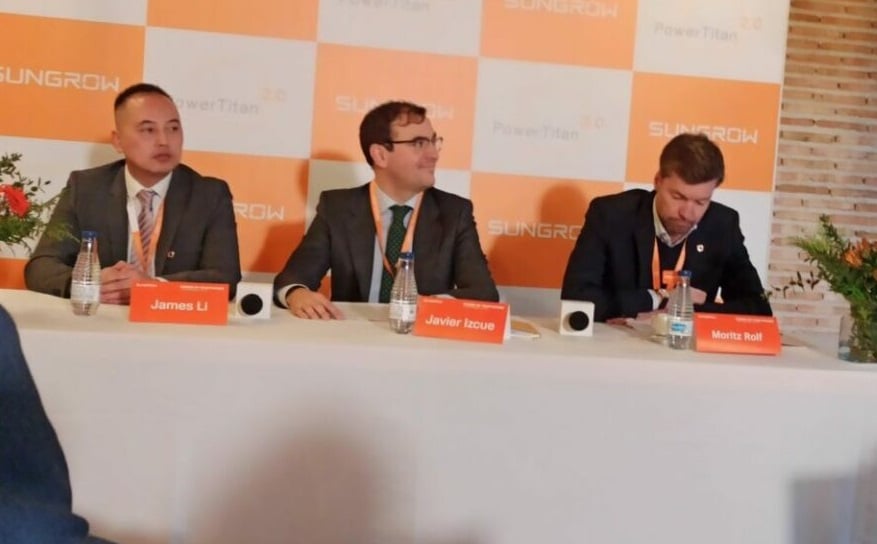Proof of this interest in the Spanish market is the company’s choice of location to host its PowerTitan 2.0 Experience Day in Madrid – which Energy-storage.news attended – earlier this month, showcasing its latest product in energy storage systems to the European scene, where it targets to deploy 200MWh of Power Titan 2.0 systems this year, all between the UK and Germany.
One of the reasons for Spain to be a late bloomer in the storage scene, is due to its lack of regulations which could draw some parallels with Italy, says Javier Izcue Elizalde, vice-president and responsible for Southern Europe at Sungrow.
“We need to have clear regulations because right now, the standard is under development. And needless to say, the capacity market is also not yet defined, but some of our customers have an appetite for these kinds of investments,” explains Izcue.
Last year alone Spain only added 5MW/10MWh of capacity, according to data from consultancy LCP Delta, with 2025 expected to be the year where BESS deployment will kickstart. A broader look at the Spanish market and other European countries’ grid-scale deployment in the coming years can be read in Energy-storage.news recent Energy Storage Report.

During a panel at Sungrow’s event, Alberto Quesada, head of engineering at renewables developer Fotowatio Renewable Ventures (FRV) explained the reason for the Spanish market to be behind in the energy storage scene is due to the lack of specific regulation and a lack of capacity market, adding: “You can only go to the wholesale market.”
The lack of regulation is not an issue unique to the Spanish market, but more broadly at the European level, as Margareta Roncevic, policy officer at the European Association for Storage of Energy (EASE), explains: “Energy storage, in general, is not recognised in many regulatory forms on the EU level and on the national level. That is a big barrier dragging in the market, even though technologies are commercially viable.”
Quesada also highlighted the issue of negative prices or close to zero in the Spanish market due to high amounts of PV during sunny days in the Summer, or wind during the winter.
Spain’s energy storage tenders
Izcue added that with Spain’s first tender for energy storage to be co-located with renewables – which awarded 1.8GWh of capacity – projects are expected to be much smaller, as is the case of Spanish utility Iberdrola which was awarded 300MW of BESS to be co-located with existing solar PV plants. It will deploy six 25MW/50MWh lithium-ion systems in the regions of Castilla y León, Extremadura, Castilla La Mancha and Andalusia.
However, with the results of an upcoming 2.4GWh Spanish standalone energy storage tender to be unveiled, in the coming months, Izcue expects the size of battery storage projects built to increase.
If these tenders could help kickstart interest in energy storage in the country, these will not necessarily be the main driver for Spain to reach 22GW of energy storage by 2030, explains Izcue.
“I don’t think that’s going to be the future of Spain, because these [auctions] are funded from Europe. We have been discussing recently with customers and some of them are not working in these plans.” Izcue added that “not everything is going to be subsidised”.
Grid issues and lack of professionals
If the lack of regulations for BESS to soar in the coming years is one of Spain’s main challenges, grid congestion and lack of personnel are also high on the list, which the solar PV industry has been facing too. With the higher complexities of storage technology, Izcue says: “It’s not easy to also find a specialist in storage.”
A report last year by Aurora Energy Research highlighted that 5% of Spain’s renewable energy generation could face economic curtailment between 2025 and 2030, which Quesada said was expected to increase in the coming year. However, long-duration energy storage (LDES) could reduce or eliminate these constraints with the deployment of 15GW LDES.


